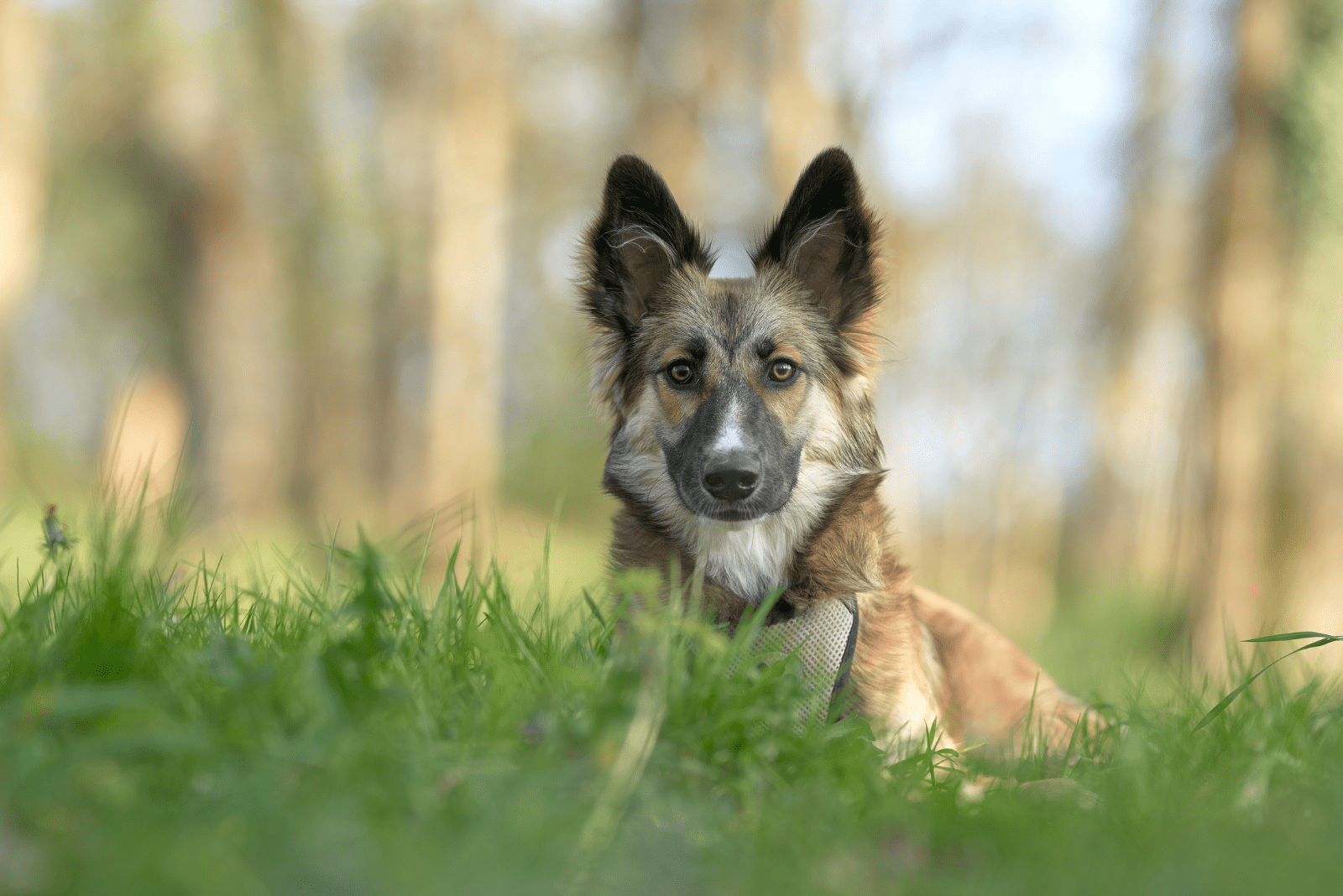Dogs are amazing creatures. As dog owners, we sometimes wish that they could speak and tell us what is on their minds. Even though they cannot communicate verbally, there are many different ways in which dogs communicate with us and other dogs.
Some ways are more obvious while others might be a bit harder to read and detect. A dog’s body language is something that every owner should know. A wagging tail or certain facial expressions are some of the ways of communication that we notice quite quickly.
Your dog having a hot head, cold ears, or even yawing are considered to be some types of dog communication because all of these signs may show you that something might be wrong or right.
But what about dogs’ ears? There are a couple of dog ear positions that can indicate a certain mood. Some of the positions are easier to read with dogs that have pointier ears while others are more detectable with dogs that have long and floppy ears.
We made a dog ear positions chart so that you can determine your dog’s behavior and feelings based on them. Many dog lovers know and sense their dog’s energy but knowing some of the signs, like ear position, is always good to know.
Dog Ear Positions Chart: Learning About Dog Body Language
Besides their tails, the ears are the first thing that another dog or human will notice in a dog. Different ear positions will showcase different emotions. A couple of ear positions might have the same or a similar meaning, but a slight difference might mean a lot in certain situations.
A dog’s eyes might be the window to their soul, but the ears are the ones you should observe the most. Based on the way they place their ears, you can prevent a fight from happening. Your dog will be able to show you that they don’t like a certain dog and you will know how to react in those situations.
So it is safe to say that dogs don’t use their ears just for listening but also for communicating and expressing their feelings.
Before we start with the explanation of certain positions, we’ve made a dog ear positions chart to summarize all the ways that a dog can position their ears and what the main emotions behind them are.
[table id=513 /]
1. Relaxed/Neutral
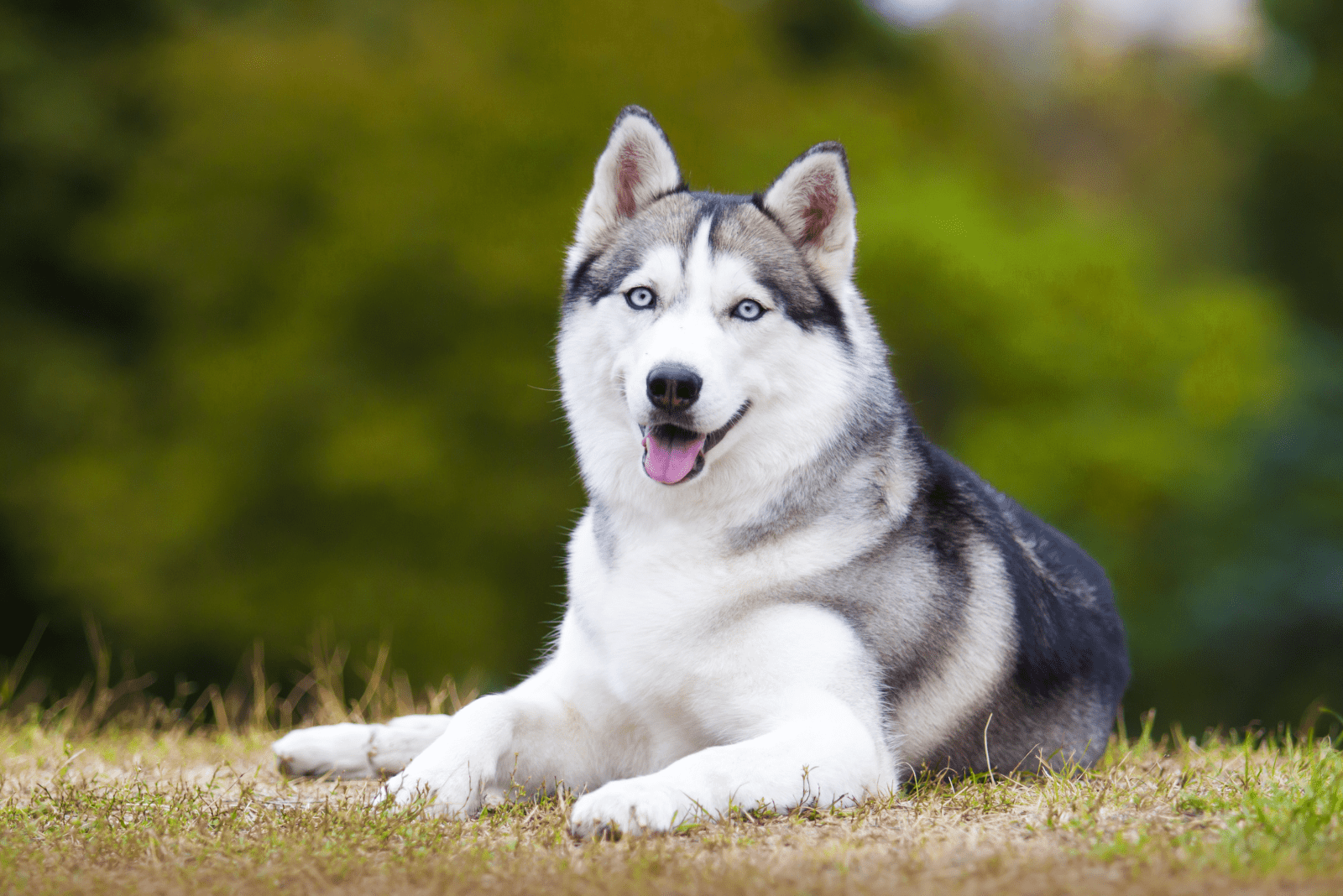
This ear position is one that you can be happy wto notice. This means that the dog is really comfortable around you and the environment that it is in. This can be interpreted differently with different dog breeds because of their natural ear position.
Dogs like the Boston Terrier, Husky, German Shepherd, etc. have naturally pointy ears, which in some cases, and in other dog breeds, might mean something different. When dogs with pointy ears are relaxed, the ears will be slightly angled.
Dogs that have naturally long and floppy ears seem to be relaxed all the time, but there is always a slight difference. Dogs like the Cocker Spaniel, Golden Retriever, or Beagle, who have floppy and folded ears, will have the base of their ears in a comfortable and neutral position and the outer ear will hang loosely.
Relaxed ears are the best indicator that your pooch is happy but calm. Having a relaxed dog is every dog owner’s dream.
2. Dropped Back/Flattened/Pinned
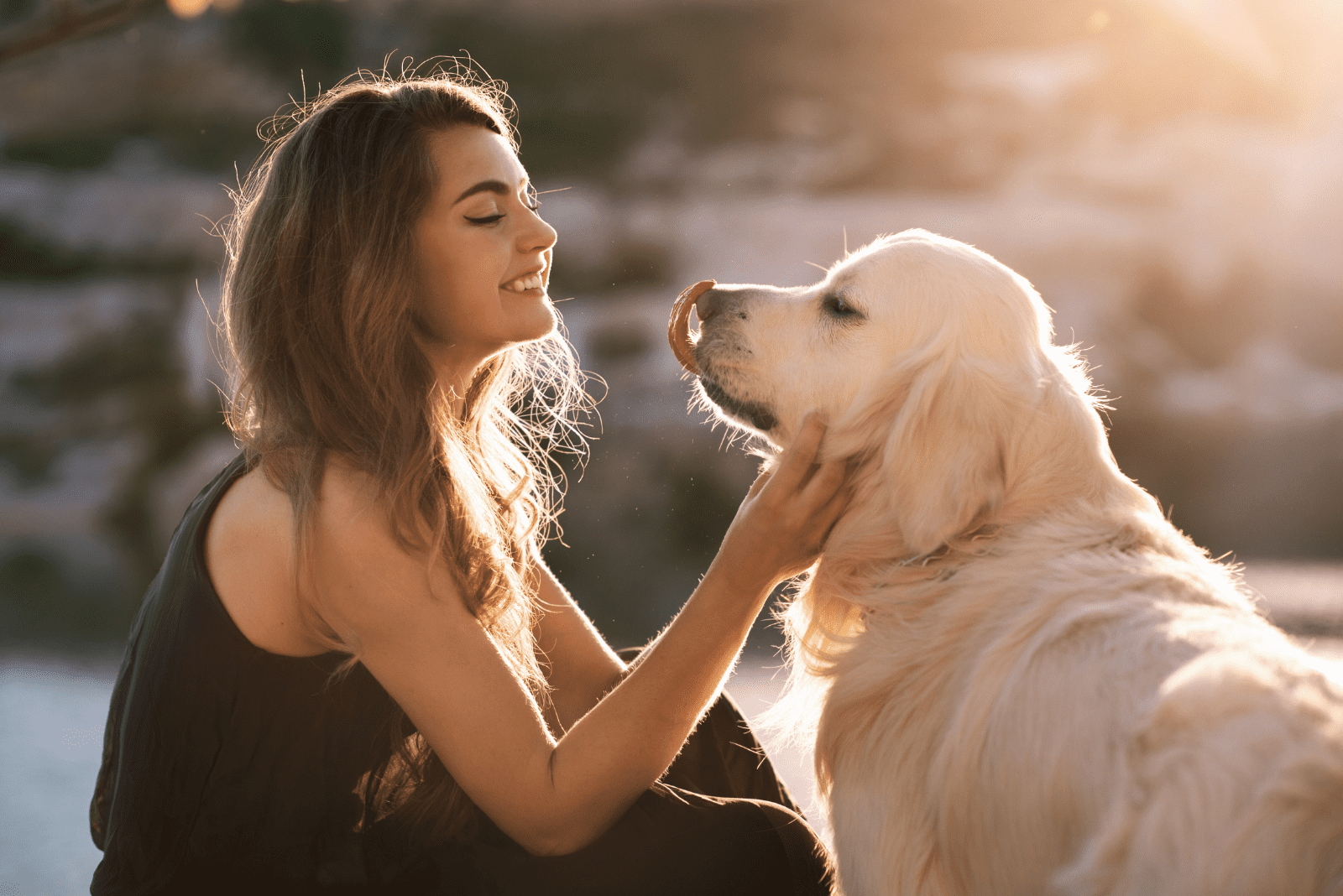
This position means that the dog will lower its ears to their head. This is more noticeable with dogs that have pointy and straight ears. This is not the ideal ear position because this means they are showing fear or submissive behavior.
Flat ears are usually showcased to other dogs. This means that your dog feels submissive towards the other dog because they sense that the other dog’s energy is bigger and more dominant than theirs.
You may feel sorry for your dog, but in the bigger picture, this might be good because your dog is showing the other dog that they don’t want any problems and that they are willing to let the other dog sniff them and analyze them. When they get to know each other, they might become friends and continue to play.
But the bigger concern is when the dog is showing fear by flattening its ears. When you see a dog that has been abused by humans, you will most likely see them flatten their ears and have a curled-up body posture.
If your dog pins its ears in your home, you need to figure out what the thing that is scaring them is. A lot of dogs, for example, are scared of fireworks and will showcase this ear position if there are fireworks somewhere near your home.
You can also consider this a good thing because when they showcase fear, you can do something to calm them down.
On the other hand, pinned ears can also mean that they are happy, friendly, or excited to see you. You may notice this ear position when you arrive home after a long day of work and you greet your dog.
They will most likely pin their ears down, lower their body, wag their tail, and almost crawl to you to get some cuddles. This way, they are showing you that they are very excited that you came home.
They can also showcase this behavior when they see a dog that they like or that they often play with. The dog’s face will probably look like they are smiling at that moment.
Since this ear position can mean two completely different things, it is important to follow other body language and the environment to know exactly which emotion they are showing.
3. Attentive/Pricked/Pointed
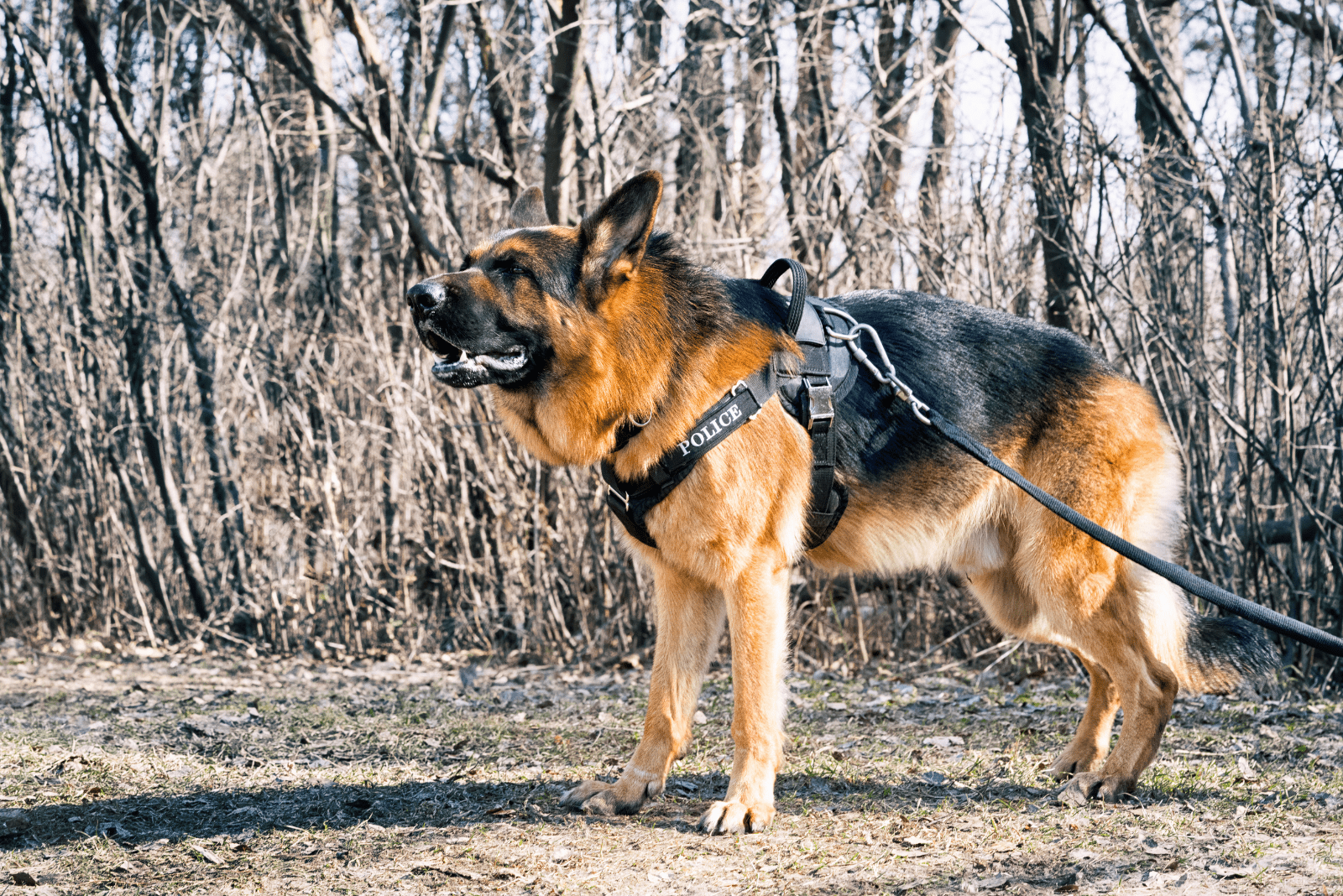
Pointed ears can mean a lot of things, this is why it is important to know your dog and its body language. One of the things that this can mean is alertness. This is mostly shown towards other dogs. This means that both dogs have strong energy and won’t let the other one be the dominant one.
Your dog is showing both you and the other dog that they are willing to defend themself and attack if necessary. This doesn’t mean that your dog is an aggressive dog, it is just showing that this particular dog, or even human, is not their cup of tea.
A dog’s posture will probably have an uptight and muscular feel to them, the dog’s head will be still and up, and you might notice some lip licking or even strong eye contact. This can also be one of the signs of aggression, so you need to monitor your dog’s behavior for a while.
When you see your dog pointing their ears toward a dog or another human, you should isolate them from the situation because this is their way of showing that they need their space and don’t want to be bothered by anyone.
Male dogs can showcase this angry behavior with pointy ears when they are sexually frustrated, especially if there is a female in heat and there are other males around. If you want to know what you can do to relieve a sexually frustrated male, you can read this article.
When this ear position is a combination of fear and alertness, you may end up with a problem such as a dog fight, lunging, or them attacking another person. This is why it is important to observe your dog and remove them from any situation that makes its ears pointy.
The other thing that pricked ears can mean is happiness. This can be confusing if you only rely on the dog’s ears to see their emotional state. They can point their ears when they notice a human or a dog that they like.
This is almost like the first step of them showcasing their happiness, excitement, and playfulness. You can see your dog pointing their ears in the middle of playtime.
If you are speaking to your dog in a cheerful and silly way, they will probably prick their ears and tilt their head as they carefully listen to what you are saying. You will notice the dog’s tail wagging, which is an indicator of a happy dog.
You can notice this more with dogs that have ears that naturally stand up straight. For the dogs that have droopy ears, this might be a bit harder to notice. Concentrate on the base of the ears, which will be more upright or in other words, standing higher than they do naturally.
4. Changing Positions
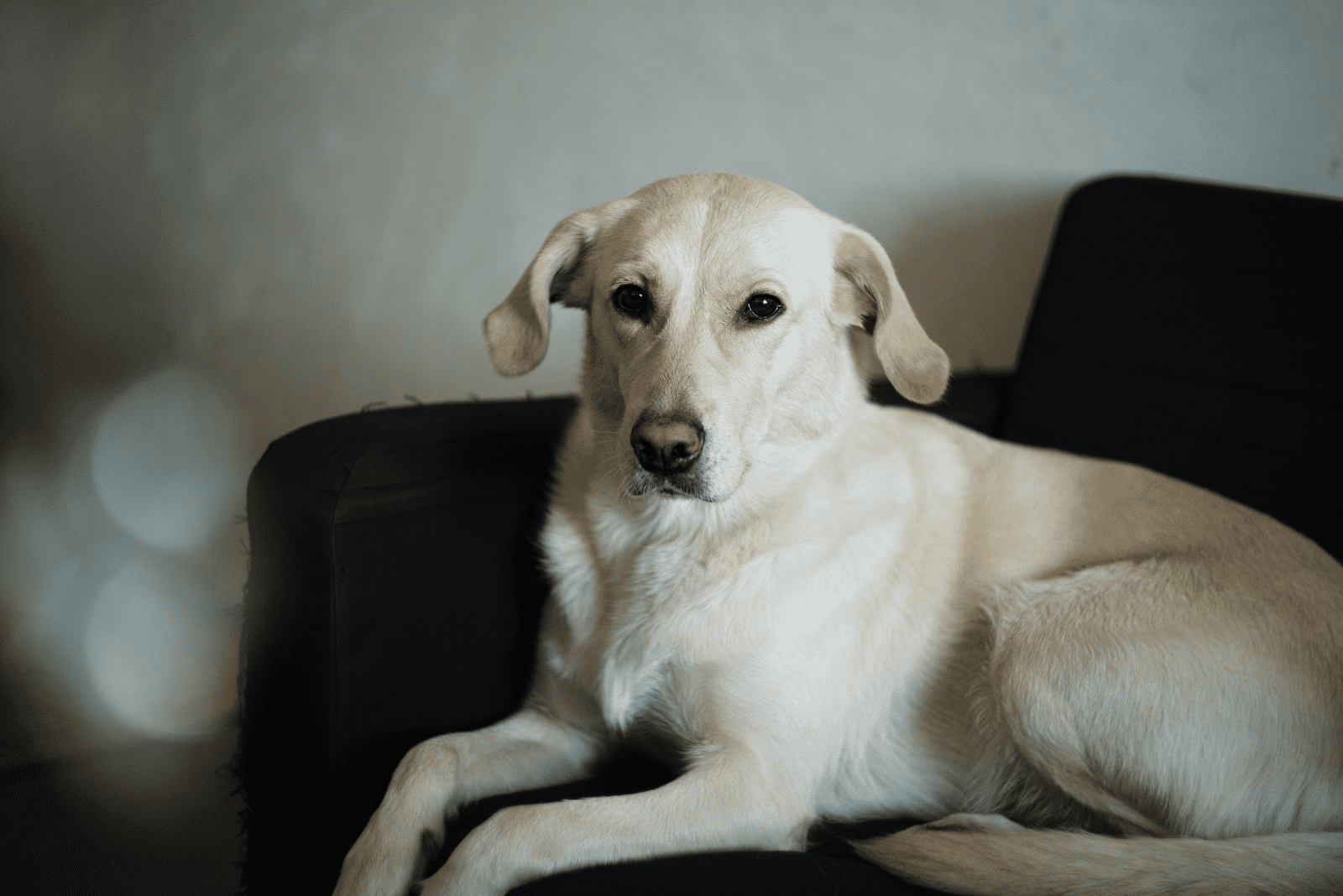
This varies in different breeds and is more noticeable in dogs with pointy ears. This means that the dog is a bit confused. This might confuse you as well, but the good thing is that not even the dog knows how it feels, so you don’t need to bust your head trying to figure it out.
This can happen if a dog hears a sound in the house and isn’t sure where it is coming from or if they should feel alert or not. Dogs usually flick their ears back and forth when they are not sure how to feel and are figuring out what is going on.
You can leave them for a bit to figure it out by themself or you can distract them by comforting them, cuddling, kissing, giving them treats, or inviting them to play.
5. Perked/Alert
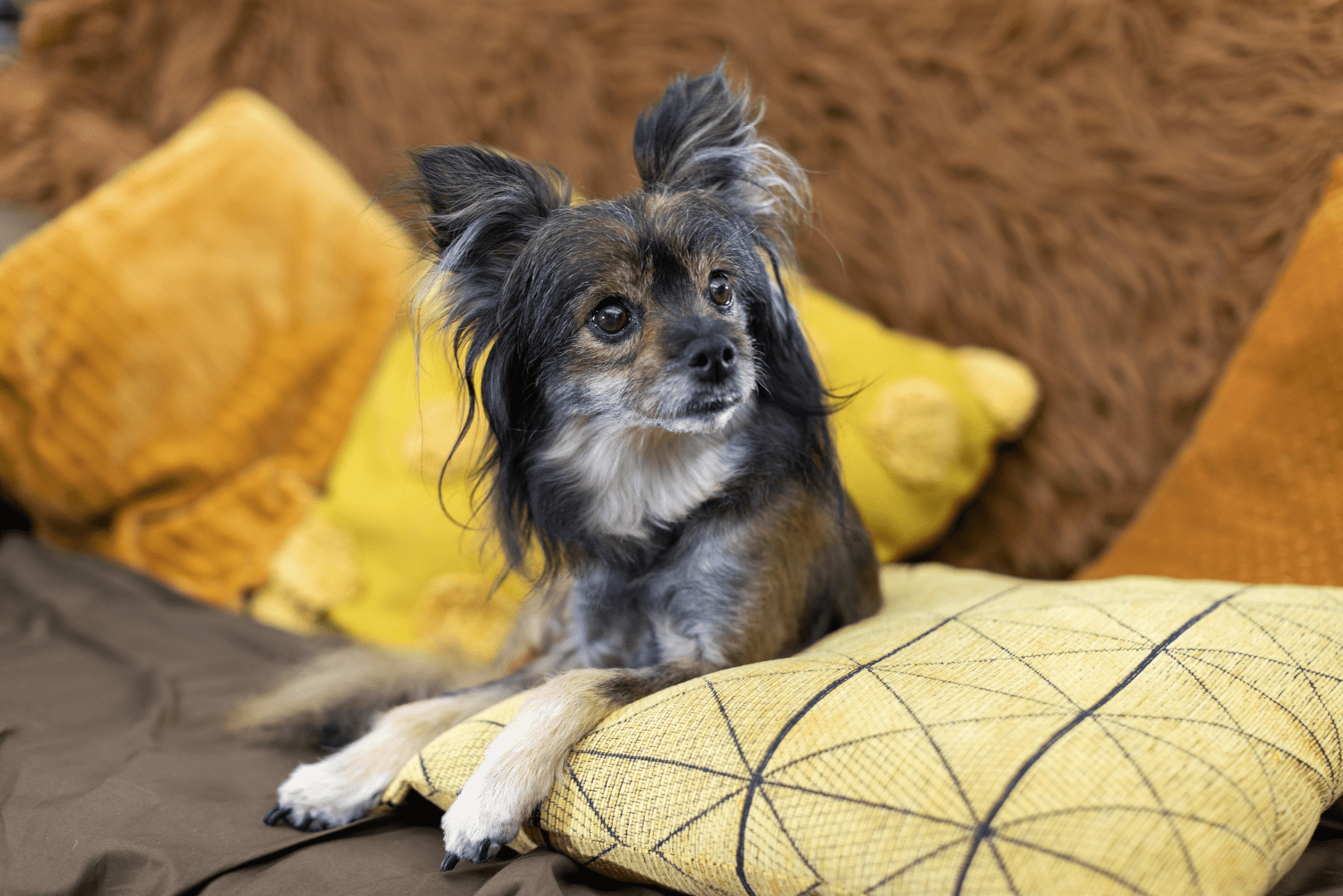
Perked ears can be similar to pointed ears but there is a different emotion between the two. You can notice the muscle tension in the dog’s body and face. This means that the dog is listening carefully and waiting for your command, a treat, or a ball to be thrown.
With perked ears, there are no bad or aggressive emotions behind it, so you don’t need to be worried. You can notice these ears if they hear a sound and aren’t sure from where and what is making it.
So, this means that they are in investigation mode.
The other alternative is that they are alert and are waiting for you to give them a command so they can get a treat. They might also be sitting and waiting for you to throw them a ball, so they are fully concentrated.
You may notice either the mouth being shut completely or an open mouth. An open mouth is more associated with when they are investigating.
Perked ears that are moving slightly from left to right are a sign that your dog is listening to you carefully. They might even tilt their head. This happens when you say one of their favorite words, like treat, walk, going out, etc.
They will want to make sure that they heard it correctly and will stare you down with those pointy ears so you repeat the words.
Your new puppy might be showcasing a lot of perked ears because they are investigating their new environment and sounds.
Other Dog Body Language
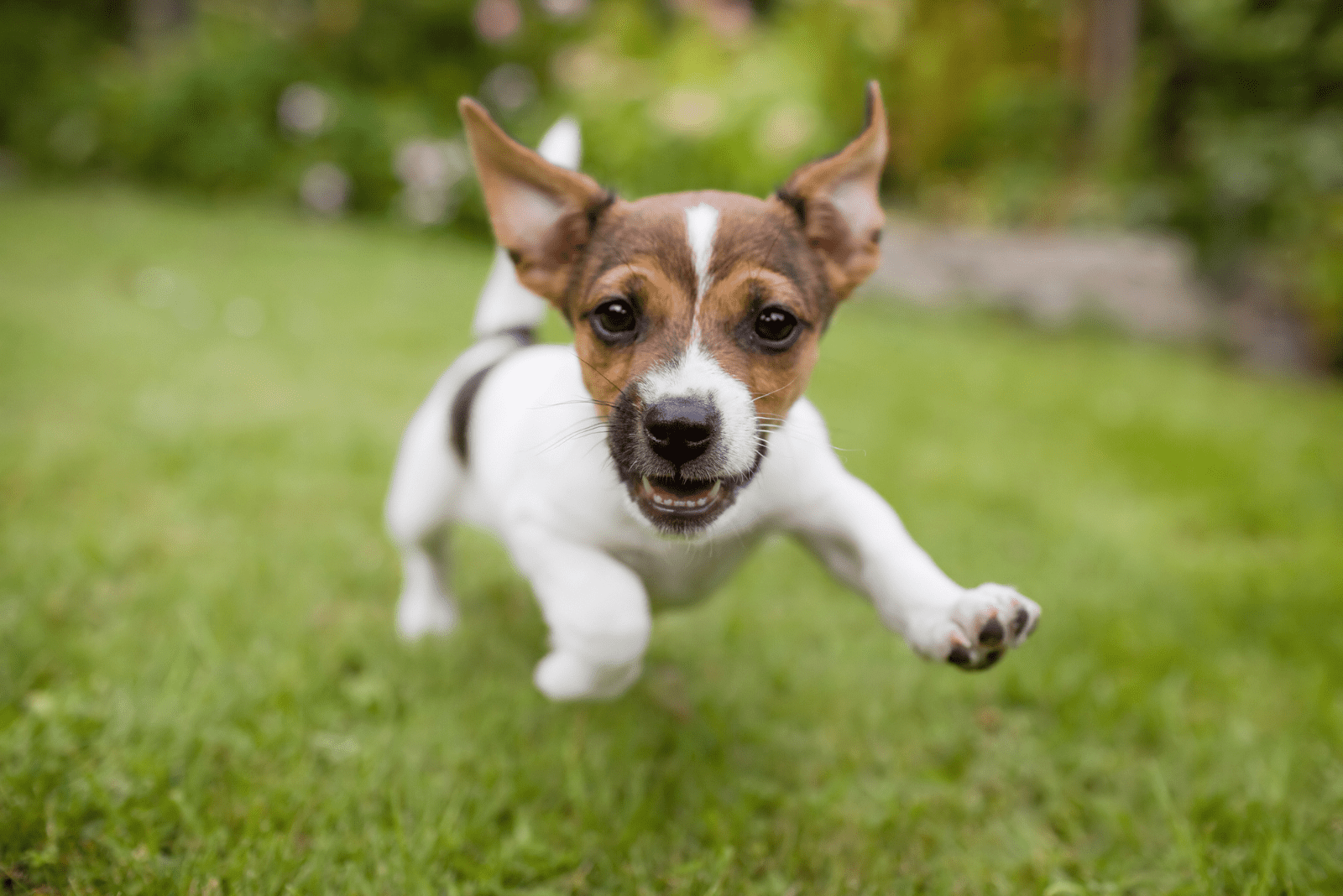
We already mentioned some of the body languages that dogs can showcase besides their ears. Some are more noticeable while others can go by without us noticing them. Dogs’ entire bodies can be considered as their communicating medium.
Everything, from their dry noses, wet noses and cold ears to wagging their tails and facial expressions, is a way for our dogs to tell us how they feel and if there is anything possibly wrong with them.
We made a list of ways your dog might be communicating with you, which is always good to know because it can help both you and the dog.
Dog Posture
Reading someone’s emotions by looking at their body posture is something we humans are known for, but you can tell a lot by a dog’s posture as well. By looking at the way your dog is standing or laying, you can tell how they are feeling.
Sometimes, it might get a bit confusing, but you will get the general picture. Here are some of the emotions you can read from their posture.
– Playfulness: This body language is very easy to spot and dogs of all ages, from puppies to seniors, do it. Besides them running along, they will take a stance with their front paws and legs near the floor while the lower part of their body is up in the air.
– Excited: This isn’t exactly a specific stance that the dog will take. An excited stance is more of a movement of the dog. The dog won’t be able to stay still and will be running and jumping all over the place. This is often connected with the zoomies that we all love to witness.
– Scared: There are plenty of ways to take the scared stance and it is displayed differently from dog to dog. Most commonly, the whole body will be lowered to the floor. There is a possibility of them shaking and their tail being put between their legs too.
– Aggression: You will definitely feel the tension when they get angry or ready to attack. The weight of their body will be mainly in their front paws. They will stare and the hair on their back will raise up. There will possibly be some growling and teeth showing.
– Relaxed: Everything about their presence will be natural. Their ears, hair, body, and mouth will be in a natural, relaxed position. You will sense that your dog is comfortable and that they feel safe and happy.
Facial Expressions
You may think that dogs don’t have that many facial expressions but you are wrong. Yes, we all know the growling face that shows us that they are mad, as well as showing their teeth. There are some facial expressions that you might not know have a meaning.
Some of the facial expressions are:
– Whale eye: This is when dogs are looking away but are fixated on someone or something and you can see the white part of the eye (sclera) clearly. This can mean that they are anxious or agitated. Sometimes, if they did something wrong and feel guilty, they might showcase their whale eye.
– Yawning: This can mean a couple of things depending on the situation. They can feel super calm and ready to go to sleep. They might also be too excited and this is their way to calm the excitement. They can even feel stressed but you can clarify this from other body language.
– Open mouth: This is a sign that your dog is calm but it can mean one other thing too; they want your food. When you are eating, your dog will probably stare at you with an open and drooly mouth.
– Showing teeth: This can mean that the dog is feeling stressed, nervous, uncomfortable, and scared. If they are growling and their hair is raised, this means that they are angry and will most probably attack the other dog.
– Licking lips: If the dog is not looking at dog food or your food while licking their lips, it might mean that they are nervous and uncomfortable. Some dogs just naturally don’t like to look you straight in the eyes, but they usually get through it and eye staring is one of their ways to get your attention.
Tail
Tail wagging is one of the most common signs we all notice and it represents happiness and excitement. But besides happiness, there can be some other meanings to this.
If the tail is a bit stiff and only slightly wagging, this can be a sign of aggression. Your dog might sense other dogs’ energy, or even a human’s energy, and not like it. You should be careful in these situations and remove the dog from it so nothing happens.
A dog can even wag their tail when meeting strangers but always let the dog sniff them before letting go of them. Even if it can showcase excitement, this can easily turn into something bad if the dog does not meet them before any petting.
If you are interested in what certain tail positions tell you, you can check the dog tail positions chart.
Being Vocal, AKA Barking
It is clear that your dog can not clearly communicate by barking something that they want you to know but they will still try to do so. Different sizes of dogs bring different barks. Some will be more intimidating while others will sound soft, even if the pooch is angry.
Barking can mean every emotion. This is why it is important to know other body languages so you know what your dog is trying to tell you. They can bark because of excitement and also when they are calling you or other dogs for playtime.
It can just be a way for your dog to get your attention. Barking is also connected to anger and nervous behavior, especially if there is some growling incorporated into the bark.
To Sum Up
All of these body languages, including the dog ear positions, are not just guesses, even the American Kennel Club (AKC) has confirmed all of these. Dogs have different ways of communicating and changing the position of their ears is one of them.
Ear signs can help us and the dog a lot. It is a good way to understand how your dog is feeling. You can help the dog if they are feeling nervous or scared. You can also remove it from situations that can potentially be dangerous.
We hope that the dog ear positions chart helped you to better understand the communication by your dog’s ears. With some dogs, it might be harder to read some of the signs, especially with dogs that have long floppy ears.
But it is not impossible, you just need to concentrate more and pay more attention, the signs will be there.
OTHER CONTENT YOU MAY LIKE:
– Why Does My Dog Follow Me To The Bathroom? 20 Reasons You Didn’t Know
– Dog Growling At Nothing: The Common Causes And Solutions
– Why Do Dogs Sleep With Their Bum Facing You? 10 Reasons Why
